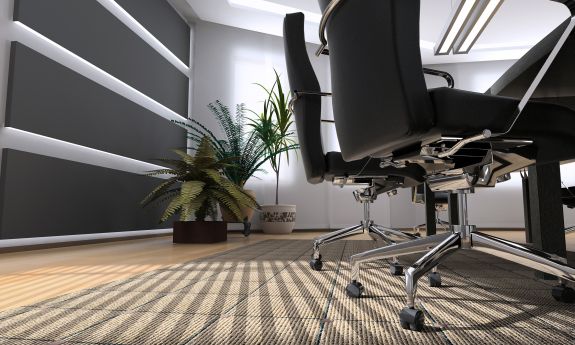Don’t Let ‘Dead Butt Syndrome’ Sneak Up on You
The aches you feel might be signs your tech and workstation habits need a reset, and a Duke ergonomics expert shares helpful advice


Taylor Pennigar notices a difference in how she feels on days when her role as a Clinical Nurse keeps her mostly at her desk. Monday through Thursday, she manages scheduling for the Duke Cardiothoracic Operating Room, a responsibility that means stretches on the phone and extended time seated.
“I have to be intentional about getting up and walking 500 steps at a time,” said Pennigar, who makes a concerted effort to use her standing desk and walk on lunch breaks. “Otherwise, it doesn't really feel like I've gotten up and gotten that blood circulating.”
Sitting too much can be bad for your heart, joints, muscles, metabolism and mental health. The American Heart Association says too much sedentary time increases the risk of cardiovascular disease, diabetes and death. And in some cases, it can lead to something called “Dead Butt Syndrome”
Though it’s a silly name, it’s a real affliction also known as “gluteal amnesia” – when the muscles in your behind become so weak from inactivity that they seemly forget how to function. They are slow to activate or fail to do so entirely.
Simply put, it’s a byproduct of sitting too much.
Aches like “Dead Butt Syndrome” can stem from poor ergonomics, long hours of sitting or too few movement breaks. Tech-related issues include “Tech Neck” and “Smartphone Pinky,” all caused by common habits in our modern routines.
Here are some conditions, the problem that leads to aches and a solution from Marissa Pentico, Safety & Health Specialist and Ergonomics Coordinator for Duke Occupational and Environmental Safety Office.
Problem: Sitting too much
Silly Name for Real Affliction: Dead Butt Syndrome, or gluteal amnesia: Dull ache while sitting, tight hip flexors and lower back
Solution: The easiest way to avoid sitting too much is to come up with a schedule for when to take breaks. Pentico says that Alan Hedge, an Emeritus Professor at Cornell University who researched workplace ergonomics, recommends a specific breakdown for each 30-minute period:
Sit for 20 minutes.
Stand for eight minutes.
Move around for two minutes to get the circulation going.
Pentico also advises subscribing to a “big cup, little cup” approach to hydration.
“It means if you've got a big cup you want to fill it up with water so that you frequently go to the bathroom,” Pentico said. “Or if you've got a little cup, you need to frequently get up to fill it.”
Either way, you’ll stand up often.
Problem: Poor posture such as hunching over, bending your head forward or looking down at mobile phones, tablets or computers for extended periods of time
Silly Name for Real Affliction: Tech Neck or Text Neck: Neck or shoulder pain, soreness or stiffness
Solution: Self-assessment can be the most effective way to determine if your set-up is correct and whether your posture is leading to a stiff neck.
Pentico says the first step is to understand what the recommended sitting posture is at a workstation.
First, sit with your feet flat on the ground or on a footrest. Make sure your knees are at or slightly below your hips. Lean back against the back rest of your chair, with the curve of the chair at about your beltline. Finally, with your arms at your side, bend your elbows at 90 degrees with your wrists straight.
From there, Pentico says to identify what you’re looking at (the monitor) and what you’re reaching for or holding (the keyboard and mouse). Both can affect your back, shoulder and arm posture.
“Recognize how the different body parts are moving away from the recommended positions when the equipment is not properly set up,” Pentico said.
Reposition the equipment so your posture is back to where it should be.
Problem: Holding your cellphone awkwardly
Silly Name for Real Affliction: Smartphone Pinky: A wide gap between your ring and pinky fingers or a bump on your pinky where you support your cellphone.
Solution: For this, Pentico offers a simple solution: Use earbuds or a phone stand so you’re not holding your phone as much – and not using your pinky to balance it.
Send story ideas, shout-outs and photographs through our story idea form or write working@duke.edu.
Follow Working@Duke on X (Twitter), Facebook and Instagram and subscribe on YouTube.